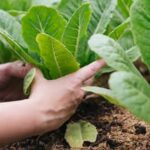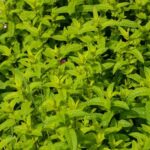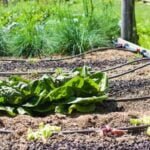Are you interested in starting your own vegetable planter garden, but not quite sure where to begin? Look no further. In this article, we will provide you with essential vegetable planter gardening tips to help you get started on the right foot. From selecting the right planter to harvesting your delicious vegetables, we’ve got you covered. Whether you’re a seasoned gardener or just starting out, these tips will help you create a thriving vegetable planter garden.
When it comes to vegetable planter gardening, one of the most important aspects is selecting the right planter for your garden. We’ll discuss different types of planters and their benefits to help you make an informed decision. Additionally, we’ll explore the best vegetables for container gardening and provide insight into how to choose the most suitable options for your space and climate.
In addition, we’ll also cover crucial tips for soil quality and drainage in vegetable planters. Maintaining and caring for your plants are key components of successful gardening, so we’ll offer valuable advice on how to keep your vegetables healthy and thriving. By following these guidelines, you’ll soon be enjoying a bountiful harvest from your very own vegetable planter garden.
Selecting the Right Vegetable Planter for Your Garden
When it comes to vegetable planter gardening, selecting the right planter for your garden is crucial for the success of your plants. There are various types of planters available in the market, each with its own advantages and disadvantages. Here are some factors to consider when choosing the right vegetable planter for your garden.
Size and Space
The first thing to consider when selecting a vegetable planter is the size and space available in your garden or patio. If you have limited space, you may want to choose smaller planters that can be placed on a windowsill or balcony. For larger gardens, you may opt for bigger containers or raised beds that can accommodate more vegetables.
Material
Vegetable planters come in a variety of materials such as plastic, ceramic, wood, and fabric. Each material has its own advantages in terms of durability, insulation, and aesthetics. Consider the climate in your area and the specific needs of the vegetables you want to grow when choosing the material for your planters.
Mobility
Consider how mobile you want your vegetable planters to be. If you live in an area with harsh weather conditions, you may want to choose planters with wheels for easy moving during extreme temperatures. If mobility is not a concern, then stationary planters may be suitable for your garden.
Remember these key points when selecting the right vegetable planter for your garden: size and space available, material preferences based on climate and plant needs, and whether mobility is a priority for your gardening needs. By choosing the right vegetable planter, you set yourself up for success in container gardening.
Choosing the Best Vegetables for Container Gardening
When it comes to vegetable planter gardening, choosing the right vegetables for your containers is essential for a successful harvest. Not all vegetables are ideal for container gardening, so it’s important to select those that are well-suited for this type of growing environment.
Some of the best vegetables for container gardening include tomatoes, peppers, lettuce, spinach, radishes, carrots, and green onions. These vegetables are compact and don’t require a lot of space to grow, making them perfect for planting in containers.
Tomatoes are one of the most popular choices for container gardening because they can thrive in pots or planters as long as they receive plenty of sunlight and consistent watering. Peppers also do well in containers and come in a variety of sizes and heat levels to suit different tastes.
Lettuce and spinach are great options for smaller planters and can be easily grown on patios or balconies. Radishes, carrots, and green onions have shallow root systems, making them well-suited for planting in containers with good drainage.
Before selecting which vegetables to plant in your containers, consider the amount of sunlight your garden receives and how much space you have available. Additionally, take into account the climate in your area and how it may affect the growth of certain vegetables. With the right selection of vegetables and proper care, you can enjoy a bountiful harvest from your vegetable planter garden.
| Vegetable | Suitability |
|---|---|
| Tomatoes | Ideal for full sun and consistent watering |
| Peppers | Come in various sizes and heat levels; thrive in containers |
Essential Tips for Soil and Drainage in Vegetable Planters
When it comes to vegetable planter gardening, one of the most crucial factors for success is the type of soil and the drainage system in your planters. The right soil composition and proper drainage can make a significant difference in the health and yield of your vegetables. In this section, we will discuss some essential tips for soil and drainage in vegetable planters to help you achieve a thriving container garden.
Choosing the Right Soil for Vegetable Planters
The key to successful vegetable planter gardening is using high-quality, well-draining soil. Look for a potting mix specifically formulated for container gardening, as this will ensure good air circulation and moisture retention. Avoid using regular garden soil, as it tends to become compacted in containers, leading to poor drainage and restricted root growth. Additionally, consider adding organic matter such as compost or peat moss to improve the soil structure and fertility.
Proper Drainage for Vegetable Planters
Good drainage is vital for preventing waterlogged soil, which can lead to root rot and other issues. To ensure proper drainage in your vegetable planters, it’s important to have sufficient drainage holes at the bottom of each container.
Elevating your planters with pot feet or placing them on a slatted surface can also help excess water escape. Consider using a layer of gravel or broken pottery shards at the bottom of each planter to aid drainage without clogging the holes.
Testing and Amending Soil pH
Before planting your vegetables, it’s a good idea to test the pH level of your soil using a simple testing kit. Most vegetables prefer slightly acidic soil with a pH level between 6.0 and 7.0. If necessary, adjust the pH by adding lime to raise it or sulfur to lower it accordingly.
By implementing these essential tips for soil and drainage in your vegetable planters, you can create an optimal growing environment for your container garden. With the right soil composition and proper drainage system in place, you’ll be on your way to enjoying bountiful harvests of fresh, homegrown vegetables.
Maintaining and Caring for Vegetables in Planters
Now that you have chosen the right vegetable planter and selected the best vegetables for container gardening, it is important to know how to properly maintain and care for your vegetables in planters. Here are some essential tips to ensure the health and success of your vegetable planter garden:
1. Regular watering: One of the most important aspects of caring for vegetables in planters is ensuring they receive adequate water. Since planters can dry out more quickly than traditional garden beds, it is important to water your vegetables regularly, especially during hot and dry weather. Check the moisture level of the soil frequently and adjust your watering schedule as needed.
2. Proper feeding: Fertilizing your vegetables is crucial to their growth and productivity. Choose a high-quality fertilizer specifically designed for container gardening and follow the instructions on the packaging. It is important not to over-fertilize, as this can lead to nutrient imbalances in the soil.
3. Pruning and grooming: Regular maintenance such as pruning, grooming, and removing dead or diseased leaves is essential for keeping your vegetable plants healthy. This helps improve air circulation around the plants, reduce the risk of diseases, and encourage better growth.
By following these vegetable planter gardening tips for maintaining and caring for your vegetables in planters, you can ensure a bountiful harvest of fresh produce from your garden. Remember to stay attentive to the needs of your plants and make adjustments as necessary to promote their overall health and well-being.
Watering and Fertilizing Techniques for Vegetable Planters
When it comes to vegetable planter gardening, ensuring that your plants receive the right amount of water and nutrients is crucial for their growth and overall health. In this section, we will discuss some essential watering and fertilizing techniques to help you optimize the productivity of your vegetable planters.
Firstly, it’s important to pay attention to the specific watering needs of each vegetable you are growing in your planters. Different vegetables have different water requirements, so be sure to research and understand the individual needs of each plant. As a general rule, most vegetables grown in containers will require more frequent watering compared to those grown in traditional garden beds, as containers tend to dry out faster.
In addition to regular watering, providing the right balance of nutrients through fertilization is key to promoting healthy growth and abundant harvests. Consider using a balanced fertilizer designed specifically for vegetables, or opt for organic options such as compost or manure. Fertilize your vegetable planters according to the instructions on the product label or based on expert recommendations for each type of vegetable.
Finally, consider investing in a self-watering system or incorporating mulch into your vegetable planters to help maintain soil moisture levels and reduce water evaporation. These techniques can help minimize the frequency of manual watering while still ensuring that your plants receive adequate hydration. By implementing these watering and fertilizing techniques, you can set your vegetable planter garden up for success and enjoy bountiful harvests throughout the growing season.
Dealing With Pests and Diseases in Vegetable Planters
When it comes to maintaining a vegetable planter garden, dealing with pests and diseases is an inevitable part of the process. However, there are several preventative measures and solutions that can help ensure the health and vitality of your plants.
One important step in preventing pests and diseases in your vegetable planters is to keep a close eye on your plants. Regularly inspecting the leaves, stems, and soil for any signs of infestation or disease can help catch problems early on. This allows you to address them before they have a chance to spread and cause significant damage.
In addition to regular inspections, implementing natural pest control methods can also help keep your plants healthy. For example, companion planting certain herbs and flowers alongside your vegetables can deter pests without the need for harmful chemicals. Additionally, using organic fertilizers and pesticides can minimize the risk of introducing harmful substances into your garden.
Moreover, choosing disease-resistant varieties of vegetables for your planters can also be beneficial in reducing the likelihood of encountering issues. Many seed catalogs and nurseries offer plants specifically bred to withstand common plant diseases, providing an added layer of protection for your garden.
| Method | Benefits |
|---|---|
| Regular inspections | Catching problems early |
| Natural pest control methods | Minimizing the use of harmful chemicals |
| Disease-resistant varieties | Reducing the likelihood of encountering issues |
Harvesting and Enjoying the Fruits of Your Vegetable Planter Garden
Once your vegetables have been planted, nurtured, and cared for, it’s time to reap the rewards of your hard work and enjoy the bountiful harvest from your vegetable planter garden. Harvesting your homegrown vegetables is not only rewarding but also ensures that you enjoy the freshest produce possible.
When it comes to harvesting vegetables from planters, timing is crucial. Different vegetables have different harvesting times, so it’s essential to be familiar with the specific requirements of each vegetable you’re growing. For example, tomatoes should be allowed to ripen on the vine before picking them, while lettuce should be harvested when the leaves are young and tender.
After harvesting your vegetables, it’s important to handle them with care to ensure their freshness and flavor. Use a sharp pair of garden shears or scissors to cut away the vegetables from the plant rather than pulling or twisting them off. This will minimize damage to the plant and help promote continued growth for future harvests.
Finally, once you’ve harvested your homegrown vegetables, take the time to savor and enjoy them. Freshly picked vegetables have unmatched flavor and nutritional value, making all your hard work in tending to your vegetable planter garden well worth it. Whether you decide to cook up a delicious meal with your harvest or simply snack on the fruits of your labor, there’s nothing quite like enjoying the taste of homegrown produce straight from your own garden.
Conclusion
In conclusion, vegetable planter gardening offers a convenient and rewarding way to grow your own fresh produce, no matter how much space you have. By selecting the right vegetable planter, choosing the best vegetables for container gardening, and following essential tips for soil and drainage, anyone can enjoy a successful harvest of homegrown veggies.
Maintaining and caring for vegetables in planters requires regular watering, fertilizing, and vigilant pest control. With proper attention to these tasks, you can ensure that your plants thrive and produce an abundance of delicious vegetables for you to enjoy.
As you embark on your journey as a vegetable planter gardener, remember that patience and perseverance are key. There may be challenges along the way, such as dealing with pests and diseases, but with determination and the right knowledge, you can overcome these obstacles.
Ultimately, the satisfaction of harvesting and enjoying the fruits of your labor will make it all worthwhile. Whether you are a beginner or experienced gardener, these vegetable planter gardening tips can help you succeed in cultivating a bountiful garden of fresh, healthy produce right at home.
Frequently Asked Questions
What Is the Best Way to Layout a Vegetable Garden?
The best way to layout a vegetable garden is to consider the space, sunlight, and water availability. Plan the garden in rows or blocks, ensuring that taller plants do not shade smaller ones. Consider companion planting to maximize space and deter pests.
How Do You Make a Successful Vegetable Garden Container?
To make a successful vegetable garden container, start with a large enough pot and good quality soil. Choose vegetables that are suitable for container gardening, such as tomatoes, peppers, lettuce, or herbs. Ensure the container has proper drainage and water regularly.
What Vegetables Go Together in a Planter?
When choosing vegetables to go together in a planter, consider their growth habits and needs. For example, plant tall vining plants like tomatoes with smaller spreading plants like basil or marigolds to maximize space. Also, consider the light and water requirements of each plant when grouping them together.

If you’re looking to get into vegetable gardening, or are just looking for some tips on how to make your current garden better, then you’ve come to the right place! My name is Ethel and I have been gardening for years. In this blog, I’m going to share with you some of my best tips on how to create a successful vegetable garden.





